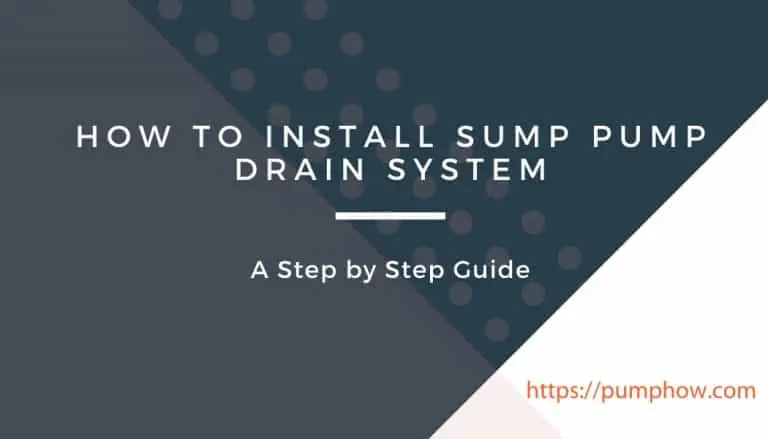A sump pump works fine for about a decade, but that’s just an average. More than half of these appliances get a shorter lifespan than that. It might be bad news for anyone trying to buy one or being not much interested in replacing their existing units anytime soon.
What if you could use some help, especially a few tips to extend the life of your sump pump? Not bad, don’t you think? You may have observed that the key to keeping up the usability of most products is to allow it some routine maintenance. Sump pumps aren’t different in this respect.
But, is the ‘upkeep’ thing going to be enough? There’re things besides those actions, and in this article, we’ll offer you a bunch of tips to help you keep a residential sump pump in a good state even beyond the average.
3 Tips to Extend Your Sump Pump’s Life
Sure, maintenance is an obvious way to get your sump pump going without a problem. So, we’ll tell you everything there’s to it and then move onto the next course of actions.
#1 Follow This Maintenance Checklist
Unlike many of our electronic appliances, sump pumps don’t require frequent cleaning and maintenance. Certain tasks on occasions and others only once a year should be enough.
Test the Pump
The schedule is more like a quarterly commitment rather than a monthly job. It means you should do the following tasks once in every 3-4 months.
Since a sump pump isn’t something that runs 24/7/365, chances are that it has already been a long time since yours ran last. It’s common in areas where downpours aren’t a frequent occurrence.
You need to be sure all parts of the pump are working properly because prolonged periods of inactivity may cause the components to refuse to work. So, the first thing you want to see is that all moving parts are in a working condition. Here’s how you test.
- Gather a 5-gallon bucket, fill it with water, pour the water into the sump basin, and see if the float switch does its job (activating the pump).
- Check if the pump can empty the pit and make sure the float switch kills itself automatically and promptly.
- See if water flows back into the pit after getting emptied. It usually happens when the motor stops and reactivates automatically. If it does, the check valve located in the discharge pipe may have become faulty. Replace it immediately, otherwise, it may help reduce the life of the pump.
Make Sure that the Pump Stands Level
It’s imperative that the pump sits evenly on the pit. If it’s off the kilter, such a position might affect the float arm causing it to get jammed. Ultimately, the pump won’t activate even when the water pressure/level is high enough.
Inspect the Ground Fault Circuit Interrupt (GFCI) Outlet
Being almost an indispensable part of the power source that modern sump pumps use, GFCI outlets should be inspected thoroughly to detect if it’s switched off. Temporary power surges might occur to cause this. If you notice that, turn it on to ensure that the pump gets the power it needs. Do this at least once a year.
Clean the Entire Pump and Parts
Apart from mechanical failure or poor manufacturing, the most obvious reason why sump pumps may lose their ability to serve is their unclean/dirty state. You can extend its life to a great extent by keeping it clean alone.
- Disconnect the pump from its power supply and remove it from the basin.
- Look closely to find if any dirt/debris lies. Remove them.
- Dislocate the inlet screen and clean its bottom because it’s likely to get clogged.
- Get rid of any solid and visible elements (sand, gravel, etc.).
The switches may also become clogged only to prevent the pump from activation. In a word, you have to check every mechanical part and clean them. Doing the cleaning twice a year is a good practice, but one time should also suffice.
There’s one preventive step to take to ensure that the issues don’t recur every now and then. An airtight lid can be a good solution. Purchase one and use it for the pump to protect it from debris.
You can check out a detailed article on keeping the pump free of clogging for a better understanding of the required steps.
#2 Waterproof Your Basement
Waterproofing a basement is itself a huge task. The only reason to attach this specific course of action to this article is to make you aware of the fact that a sump pump works better with a well-protected basement than without one.
Remember that a sump pump isn’t OPTIONAL. But a waterproof basement is a great help. Here’s a list of things you can do to make sure your basement is prepared.
The first thing you should do is repair any leakage and divert it by taking the following steps.
- Create a slope by using dirt against the foundation.
- Clean the downspouts and gutters.
- Get rid of any plant that’s located within 12 inches/30 cm of the foundation.
The next thing is to use a concrete sealer and special paint coating.
- Clear the walls of the basement off any deposit (salt, lime, etc.).
- Use 2 coats of concrete sealer.
- Use 3 layers of paint to deal with small leaks.
Taking this particular step might make you feel you’re acting like an overly cautious homeowner. To be honest, it’s part of your efforts to empower your sump pump and preparation for the next downpours.
#3 Beware of the Signs of Problems
You may not want to take care of what’s happening down in the basement every single day. Simultaneously, you can’t ignore any warning sign that your sump pump may show.
If you see there’s something wrong with the switch or the check valve, you should address the issue immediately because the first time, the whole thing can be dealt with just with a minute of effort.
But, the next time you may not help replacing that very part. Remember that a faulty mechanical part may affect the performance and serviceability of your pump. So, you can go down there and see if anything seems unusual.
Finally,
You should always care about the manufacturer’s instructions regarding the overall maintenance. Don’t forget about the very installation method which may have something to do with maintenance. Thus, you can expect a long durability from your sump pump.






